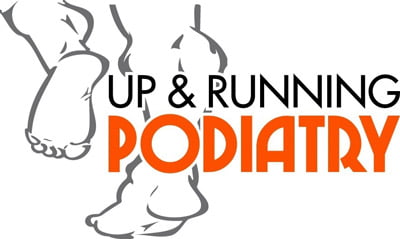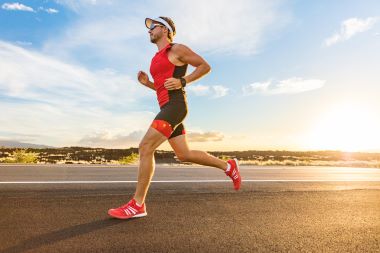The latest research confirms that shoe weight does affect running economy – essentially the lighter the shoe the faster you run.
But of course, things are never that simple……
Can Running Shoe Weight Impact Your Speed
In 2016, Hoogkamer and a team of leading biomechanical researchers in the US found that reducing the weight of your shoes by 100g has the potential to improve your performance by 1% (which might equate to a few seconds over 5k in a sprint triathlon).
Although, if the shoe was too light, it reduced running economy due to the lack of energy “store and release”. Meaning muscles have to work harder to absorb shock and push-off.
Triathlon and clinical experience tell me – training smart will always trump a lightweight shoe.
The risk/reward of a lightweight shoe (ie. 250g or lower) is relatively insignificant to injury minimisation, and simply being able to train more.
The trend we see clinically is – calf pain, Achilles pain and heel/arch pain which are often a result of training errors.
Essentially a combination of inappropriate footwear selection and an excessive ramp in running load (i.e. too much, too soon).
I think “paying your dues” is a very important concept, especially for those with an inconsistent running history. We know starting running for the first time, or returning from an extended break are correlated with injury, so be patient!
It takes years of smart training to build a pair of resilient feet and legs.
So How Do We Choose The Right Shoe?

This is never cut and dry, but a mainstay of my footwear advice for runners includes the right balance of a “distance” and a “speed” shoe.
The distance shoe (approx 280-350g / 8- 12mm heel offset) being your main or high volume shoe, and lighter shoe (approx 230-280g / 6-10mm heel offset) reserved for shorter runs and integrated slowly.
Without consideration to an individual’s injury profile and running history, my general advice for introducing a “speed” shoe would be gradually over a 4- 6 week period.
Starting with a flat easy run (ie.10 mins off the bike) in week one, building into 2 runs by week 2, and layering in some controlled speed work by week 3.
Don’t forget to practice your race specific setup (race shoe, elastic laces and sockless…) at least 2-3 weeks out from your first race of the season, including some race pace efforts.
Perfecting your skills in transition alone will have a far greater impact on your overall race time compared to the weight of your shoe.
Triathlon racing is a complex and variable sport, there are many opportunities to save time, the weight of your footwear, in reality, will have very little impact on your overall race time.
Training consistency is hands-down the single most important factor for faster racing. A measured approach to footwear selection is one controllable factor to maximise training consistency.
Getting back into running? Check out our 5 tips to minimising the risk of injury.

